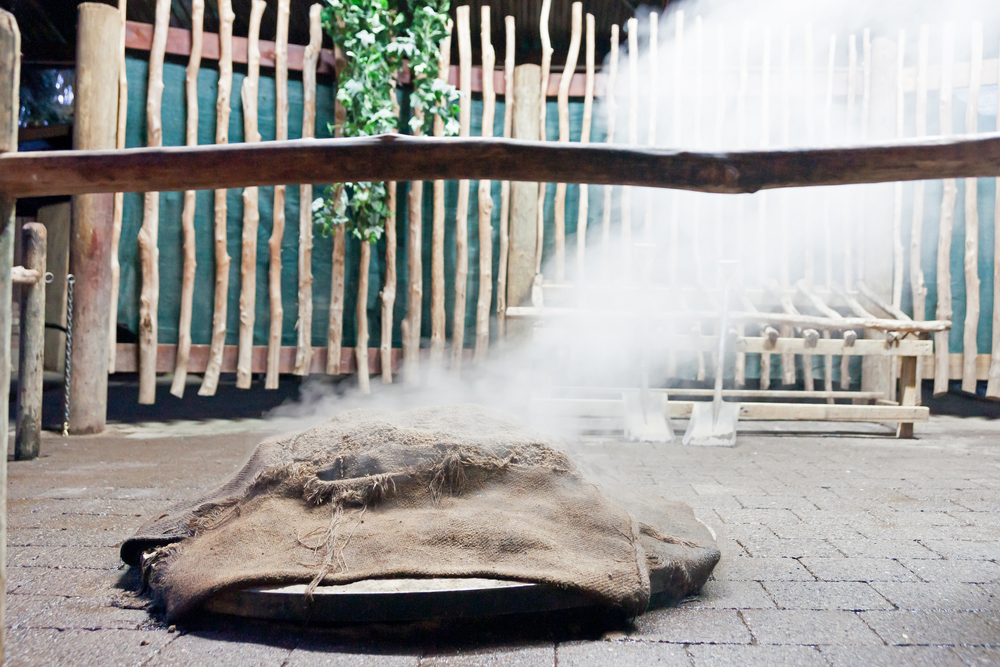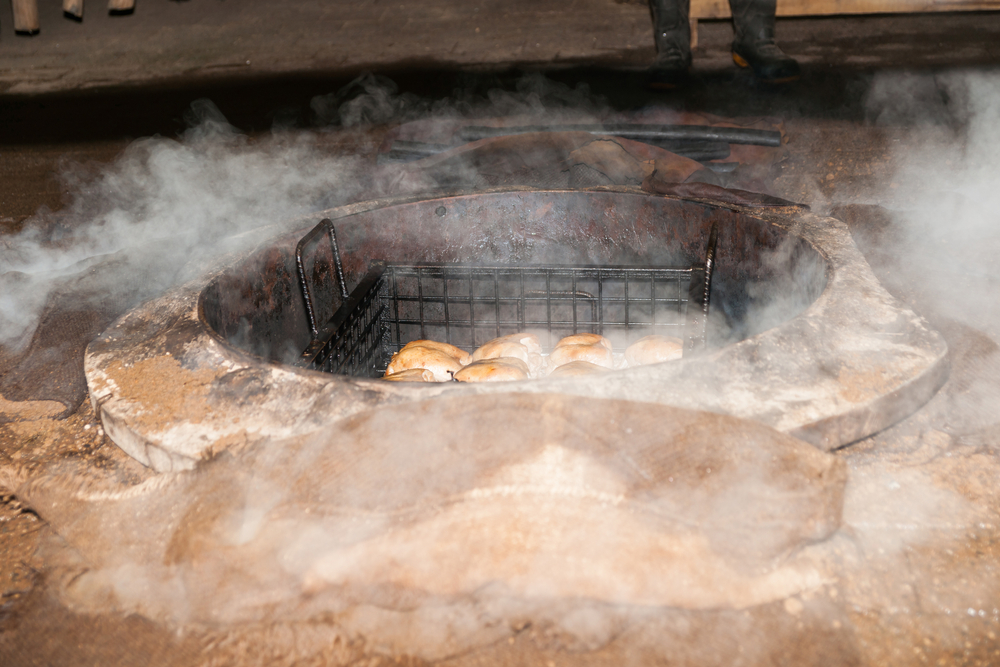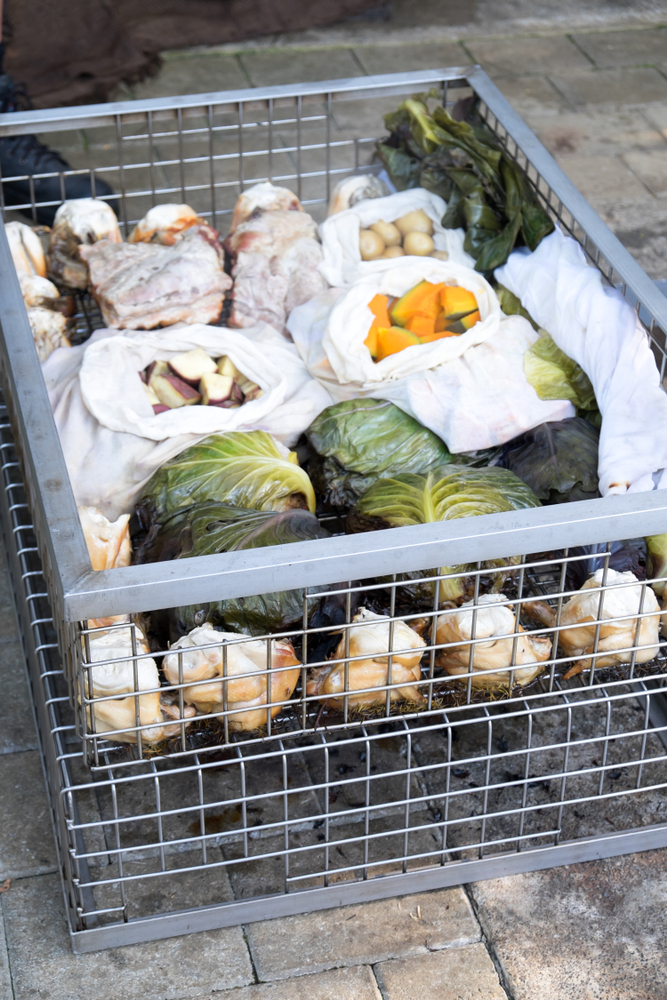Are you ready to embark on a culinary adventure through New Zealand? One of the must-try traditional dishes in this beautiful country is the Hangi. A Hangi is a Maori style of cooking that involves steaming food underground, resulting in a delicious and unique flavor. In this comprehensive guide, we will take you through the step-by-step process of preparing and cooking a Hangi, providing you with all the information you need to recreate this mouthwatering meal in your own home.
Table of Contents
- Introduction
- History and Significance of the Hangi
- Building the Fire
- Food Preparation
- Covering and Cooking the Hangi
- Uncovering the Hangi
- Tips for a Successful Hangi
- Conclusion
1. Introduction
The Hangi is an iconic traditional cooking method of the Maori people, the indigenous population of New Zealand. It involves cooking food in an earth oven, which is created by heating rocks in a fire and then burying them with the food in a pit. The food cooks slowly through the release of steam, resulting in tender meat and perfectly cooked vegetables with a distinct smoky flavor.
2. History and Significance of the Hangi
The Hangi has a deep-rooted history and cultural significance in Maori traditions. It has been practiced for centuries as a way to bring communities together and celebrate special occasions such as weddings, births, and funerals. The process of preparing and cooking a Hangi is often a communal effort, with everyone pitching in to gather the necessary ingredients, prepare the food, and tend to the fire.

3. Preparing for the Hangi
a. Gathering the Right Rocks and Wood
To ensure a successful Hangi, it is crucial to gather the right type of rocks and wood. The rocks should be volcanic, as they can withstand high temperatures without cracking or exploding. Non-volcanic stones can be dangerous and may compromise the cooking process. Additionally, select hardwoods that burn slowly and generate plenty of heat. Macrocarpa is an excellent choice as it is readily available, produces intense heat, and burns for an extended period.
b. Selecting the Perfect Cooking Spot
When choosing a spot for your Hangi, consider the size of your pit. It should be deep enough to accommodate the hot stones, wide enough for the food baskets, and slightly flared out to the sides. This shape allows for easier food placement and retrieval. Remember to protect the Hangi from wind, as it can cool the stones and affect the cooking process.
c. Soaking Sacks and Cloths
Before starting the Hangi, soak nonflammable sacks, mutton cloths, and a sheet in water. These damp materials will create steam when combined with the hot stones, ensuring the food cooks properly. Make sure to have enough sacks and cloths to cover all the food and prevent any dirt from entering.
d. Protecting the Hangi from the Elements
In case of rain, it is essential to have tarpaulins and corrugated iron on hand to protect the Hangi. Wind is more detrimental to the cooking process than rain, as it can cool the stones. Proper preparation, including covering the Hangi with these materials, will help ensure a successful cooking experience.

4. Building the Fire
a. Choosing the Ideal Location
Decide whether you want to burn the fire over the hole or build it beside the Hangi pit. Burning the fire over the hole requires thorough removal of ash to prevent a smoky taste in the food. Building the fire beside the pit allows for easier relocation of the hot stones into a clean hole. Whichever method you choose, make sure to have extra workers on hand to rotate and maintain the fire’s intensity.
b. Stacking the Wood and Volcanic Stones
There is no specific way to stack the wood, as long as there is enough space for air circulation and the volcanic stones are strategically placed throughout the pile. It is advisable to cover the wood if rain is expected before the Hangi. The fire should be lit approximately 3-5 hours before you plan to start cooking, allowing ample time for the stones to heat up.
c. Lighting the Fire
Once the fire is ablaze, attend to it by placing any fallen stones back into the fire and ensuring a consistent heat source. Be cautious when relocating the hot stones into the Hangi pit, as this process requires speed and protection from burns. Swiftly transfer the stones while maintaining their heat.

5. Food Preparation
a. Traditional Hangi Ingredients
The beauty of the Hangi is its versatility in accommodating various ingredients. Traditionally, chicken, beef, pork, potatoes, carrots, pumpkins, and kumara (sweet potatoes) are commonly used. However, feel free to experiment with other meats and vegetables based on your preferences and availability.
b. Seasoning and Wrapping the Meat
When preparing the meat, season it with your preferred spices, such as garlic, rosemary, or sage. Traditionally, the meat was wrapped in leaves of edible plants, but today, cabbage or banana leaves, or tinfoil, can be used as substitutes. Wrapping the meat helps retain moisture and infuse flavor during the cooking process.
c. Layering the Vegetables
After peeling and cutting the vegetables into suitable sizes, layer them in a mutton cloth and soak them in a pot. This prevents the vegetables from becoming too mushy during cooking. When layering the food in the Hangi baskets, place the meat closer to the heated stones and the vegetables on the upper layers.
6. Covering and Cooking the Hangi
a. Creating Steam with Wet Sacks
Once the stones are white hot and emitting substantial heat, it is time to begin the cooking process. Gently slap the hot rocks with wet sacks to create steam. The steam, combined with the water in the wet sacks, will cook the food. This step is crucial, so ensure the sacks are adequately wet and distribute the steam evenly.
b. Layering the Food and Covering with Sheets
Cover the food with a wet sheet of material, ensuring it touches the sides of the Hangi pit without touching the rocks. Layer the wet sacks over the food, strategically placing each sack to avoid dirt from falling onto the food. Start with the last sack you will remove, placing it on top, and continue overlapping the sacks until all the food is covered. The sacks at the base and sides of the hole should be the last to be placed.
c. Securing and Insulating the Hangi
When covering the sacks with dirt, start from the edges and gradually work your way to the top to prevent dirt from falling onto the stones or food. Pat down the dirt gently to create a smooth surface. If any steam escapes during the cooking process, add more dirt to the areas releasing steam. Repeat this process as needed throughout the next 2-3 hours.
7. Uncovering the Hangi
a. Checking for Doneness
After approximately 3 hours, it is time to uncover the Hangi. Carefully remove the dirt, ensuring no dirt falls onto the food. Begin peeling back the sacks, starting from the outer layers and working your way to the initial sack. The sacks may be hot, so use gloves or towels to handle them. Steam should rise from the Hangi, indicating that the food is cooked.
b. Safely Removing the Coverings
Once you have removed the sheet of material, have two people per basket ready to remove the food and transfer it to a work station for carving and serving. Take caution when handling the hot baskets and ensure the food remains intact during the transfer.
c. Serving and Enjoying the Hangi
The Hangi is best enjoyed when served immediately. Arrange the meat and vegetables on plates, and savor the unique flavors and tender textures. Share the Hangi with friends and family, appreciating the cultural significance and the communal spirit it embodies.
8. Tips for a Successful Hangi
a. Seeking Expert Advice for Larger Hangis
If you are planning a larger Hangi, it is advisable to seek advice from experienced individuals to ensure its success. Cooking for a large number of people can be challenging, and guidance from those familiar with the process will help you avoid potential pitfalls.
b. Exploring Variations and Alternative Ingredients
While traditional Hangis involve specific ingredients, feel free to explore variations and experiment with alternative meats and vegetables. Chicken, seafood, lamb, or even vegetarian options can be incorporated into the Hangi, providing a new twist on this age-old cooking method.
9. Conclusion
The Hangi is not just a meal; it is an experience that brings people together and celebrates the rich cultural heritage of New Zealand. By following the steps outlined in this guide, you can recreate the flavors and traditions of the Maori people in your own kitchen. Gather your loved ones, embark on this culinary adventure, and savor the delicious and unforgettable taste of the Hangi.
